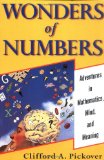The Greatest Mathematician Alive
When the Abel Prize was announced in 2001, I got very excited and started wondering who would be the first person to get it. I asked my friends and colleagues who they thought was the greatest mathematician alive. I got the same answer from every person I asked: Alexander Grothendieck. Well, Alexander Grothendieck is not the easiest kind of person to give a prize to, since he rejected the mathematical community and lives in seclusion.
Years later I told this story to my friend Ingrid Daubechies. She pointed out to me that my spontaneous poll was extremely biased. Indeed, I was asking only Russian mathematicians living abroad who belonged to “Gelfand’s school.” Even so, the unanimity of those responses continues to amaze me.
Now several years have passed and it does not seem that Alexander Grothendieck will be awarded the Prize. Sadly, my advisor Israel Gelfand died without getting the Prize either. I am sure I am biased with respect to Gelfand. He was extremely famous in Soviet Russia, although less well-known outside, which may have affected the decision of the Abel’s committee.
I decided to assign some non-subjective numbers to the fame of Gelfand and Grothendieck. On Pi Day, March 14, 2010, I checked the number of Google hits for these two men. All the Google hits in the rest of this essay were obtained on the same day, using only the full names inside quotation marks.
- Alexander Grothendieck — 95,600
- Israel Gelfand — 47,900
Google hits do not give us a scientific measurement. If the name is very common, the results will be inflated because they will include hits on other people. On the other hand, if a person has different spellings of their name, the results may be diminished. Also, people who worked in countries with a different alphabet are at a big disadvantage. I tried the Google hits for the complete Russian spelling of Gelfand: “Израиль Моисеевич Гельфанд” and got an impressive 137,000.
Now I want to compare these numbers to the Abel Prize winners’ hits. Here we have another problem. As soon as a person gets a prize, s/he becomes more famous and the number of hits increases. It would be interesting to collect the hits before the prize winner is announced and then to compare that number to the results after the prize announcement and see how much it increases. For this endeavor, the researcher needs to know who the winner is in advance or to collect the data for all the likely candidates.
- Jean-Pierre Serre — 63,400
- Michael Atiyah — 34,200
- Isadore Singer — 44,300
- Peter Lax — 118,000
- Lennart Carleson — 47,500
- Srinivasa Varadhan — 15,800
- John Thompson — 1,610,000
- Jacques Tits — 90,900
- Mikhail Gromov — 61,900
John Thompson is way beyond everyone else’s range because he shares his name with a famous basketball coach. But my point is that Gelfand and Grothendieck could have been perfect additions to this list.

I have this fun book at home written by Clifford Pickover and titled Wonders of Numbers: Adventures in Mathematics, Mind, and Meaning. It was published before the first Abel Prize was awarded. Chapter 38 of this book is called “A Ranking of the 10 Most Influential Mathematicians Alive Today.” The chapter is based on surveys and interviews with mathematicians.
The most puzzling thing about this list is that there is no overlap with the Abel Prize winners. Here is the list with the corresponding Google hits.
- Andrew Wiles — 64,900
- Donald Coxeter — 25,200
- Roger Penrose — 214,000
- Edward Witten — 45,700
- William Thurston — 96,000
- Stephen Smale — 151,000
- Robert Langlands — 48,700
- Michael Freedman — 46,200
- John Conway — 203,000
- Alexander Grothendieck — 95,600
Since there are other great mathematicians with a lot of hits, I started trying random names. In the list below, I didn’t include mathematicians who had someone else appear on the first results page of my search. For example, there exists a film director named Richard Stanley. So here are my relatively “clean” results.
- Martin Gardner — 292,000
- Ingrid Daubechies — 76,900
- Timothy Gowers — 90,500
- Persi Diaconis — 84,700
- Michael Sipser — 103,000
- James Harris Simons — 107,000
- Elliott Lieb — 86,100
If prizes were awarded by hits, even when the search is polluted by other people with the same name, then the first five to receive them would have been:
- John Thompson — 1,610,000
- Martin Gardner — 292,000
- Roger Penrose — 214,000
- John Conway — 203,000
- Stephen Smale — 151,000
If we had included other languages, then Gelfand might have made the top five with his 48,000 English-language hits plus 137,000 Russian hits.
This may not be the most scientific way to select the greatest living mathematician. That’s why I’m asking you to tell me, in the comments section, who you would vote for.
Share: